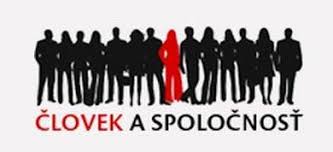Perception of Inter-Ethnic Relations of Slovaks, Hungarians and Roma 2004 – 2017
Perception of Inter-Ethnic Relations of Slovaks, Hungarians and Roma 2004 – 2017
Author(s): Michal Kentoš, Mária Ďurkovská, Klara KohoutováSubject(s): Evaluation research, Nationalism Studies, Inter-Ethnic Relations, Ethnic Minorities Studies
Published by: Spoločenskovedný ústav SAV, Slovenská akadémia vied
Keywords: Interethnic relations; Slovakia; Roma; Hungarians; Slovaks; Empirical research;
Summary/Abstract: The aim of the contribution is to analyse interethnic relations between Slovaks, Hungarians and Roma people in 2004-2017 based on empirical research data focused on the theoretical, methodological and practical issues of ethnicity and ethnic relations. The issue of interethnic relations, or to be more precise the relations between the majority and minorities in the central Europe area, represents not only a past concern but also currently one of the priorities for the countries of central and Eastern Europe. The character of contemporary interethnic relationships is becoming more and more a subject of scientific research whose results are being translated into practice. These results contribute to solutions to possible inter-ethnic conflicts that arise from the interaction of different cultures in today's society. After November 1989, the social significance of interethnic relations has been marked by ethno identification processes in the Slovak republic. The primary interest of individual minority representatives is to improve their position and secure the enactment of their rights. At the centre of societal interest in Slovakia are apart from economic and social issues also minority issues. Czechoslovakia was founded in 1918 as a state of Czechs and Slovaks with many minorities. Today, the Slovak Republic, one of the successor states of Czechoslovakia, is one of the most ethnically heterogeneous countries in central Europe. During the last century, the national composition in Czechoslovakia significantly changed through the influence of World War II and population transfers or migrations. After the fall of the communist regime in November 1989, the legislative framework for the protection of the rights of national minorities gradually changed. Slovakia entered the European Union in 2004, and before that it had to meet the Copenhagen criterion in the area of protection of rights and national minorities. One of the main issues in the near future is the ability to accept the heterogeneity of Slovak society as a normal standard. Roma and Hungarian minorities are an indicator of the problem in Slovakia, today. The problems and status of minorities are a long-term priority of the Slovak political agenda. Today, Slovakia ranks among European countries with relatively advanced legislation for the protection of national minorities. Through its approach to minorities it meets the criteria of international organizations for a modern European and liberal democracy. Data was collected in the second half of 2004 and 2017 in all regions of Slovakia. In 2004, a total of 480 respondents were surveyed for the needs of our study. The subjects of the survey were Slovaks (160) and the two most numerous minorities living in Slovakia: the Hungarians (160) and the Roma (160). The selection criteria for the research sample were: nationality indicator, t. j. public declaration of belonging to the minority; gender, age and education.
Journal: Človek a spoločnosť
- Issue Year: 21/2018
- Issue No: 4
- Page Range: 16-31
- Page Count: 16
- Language: English

